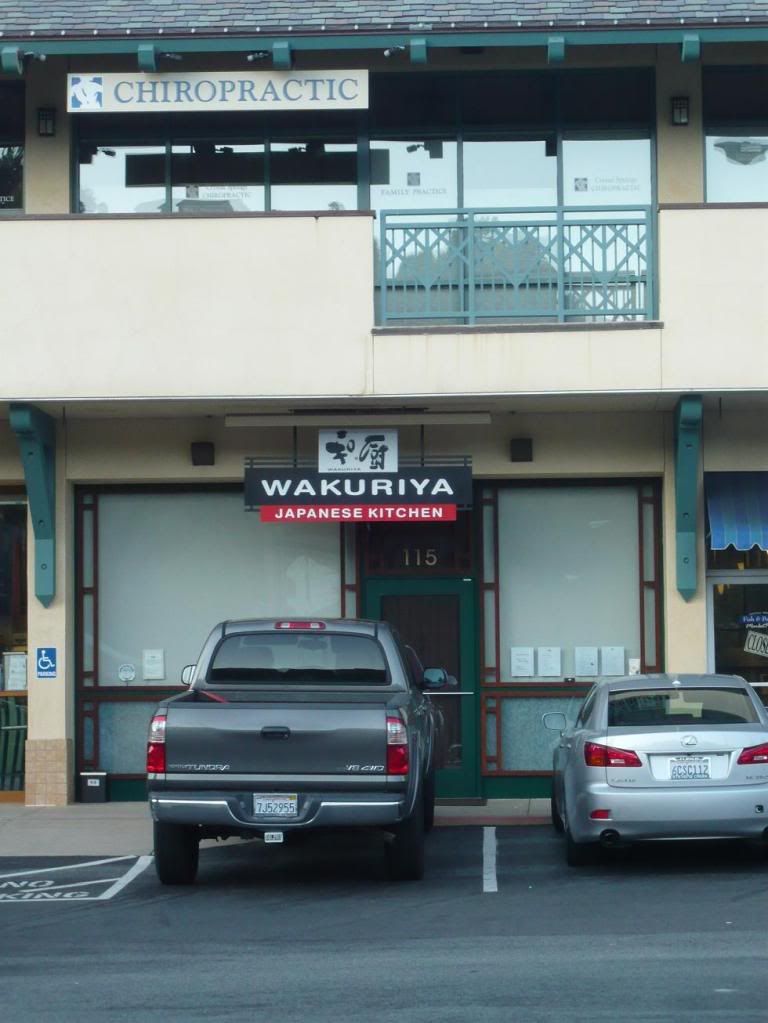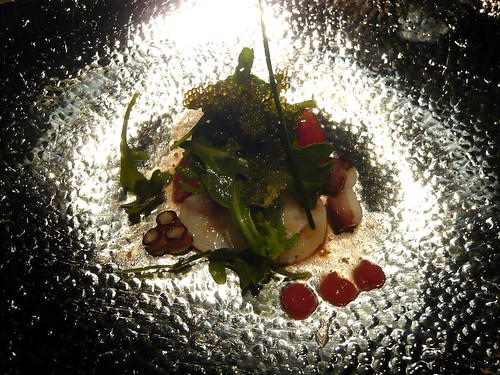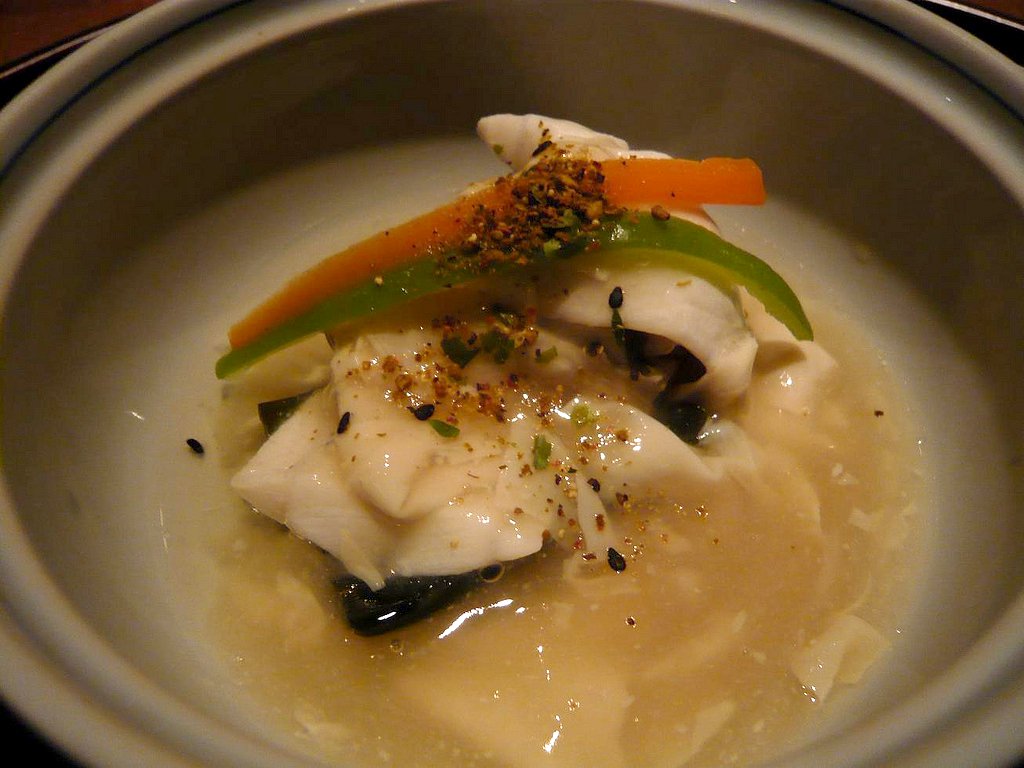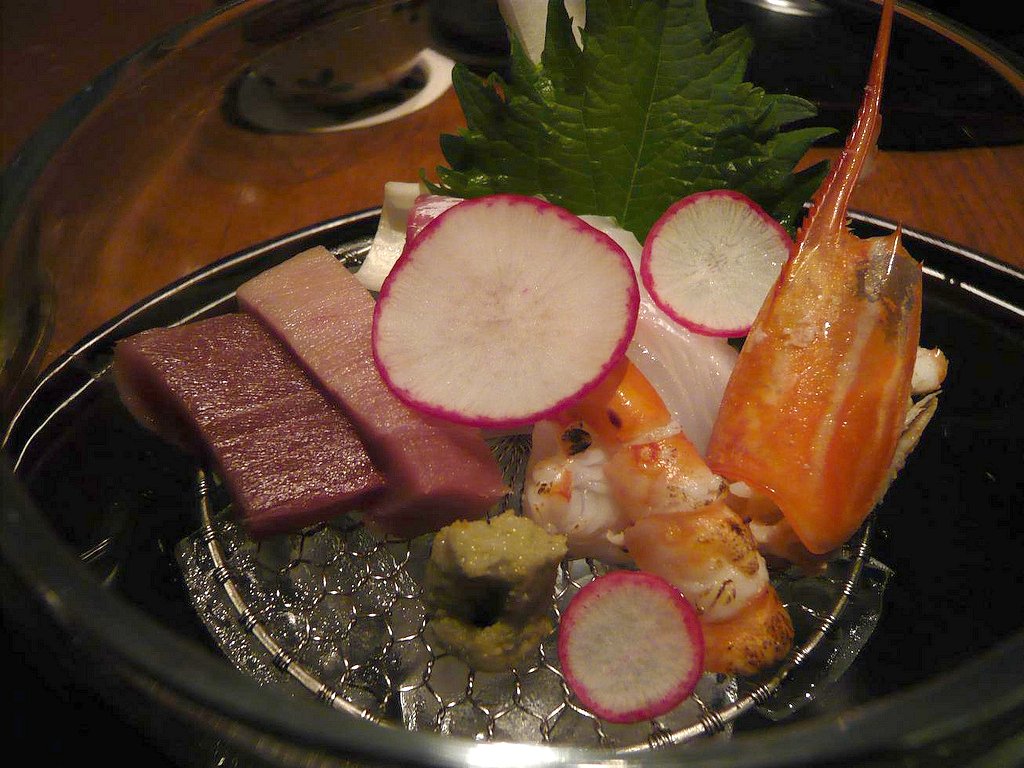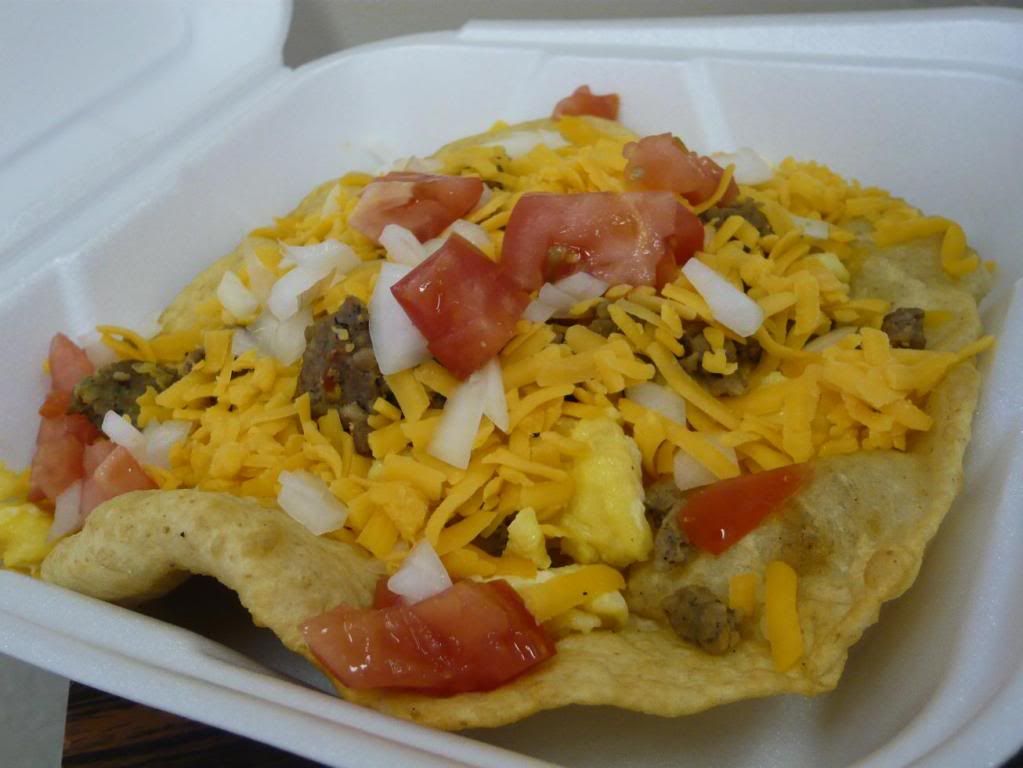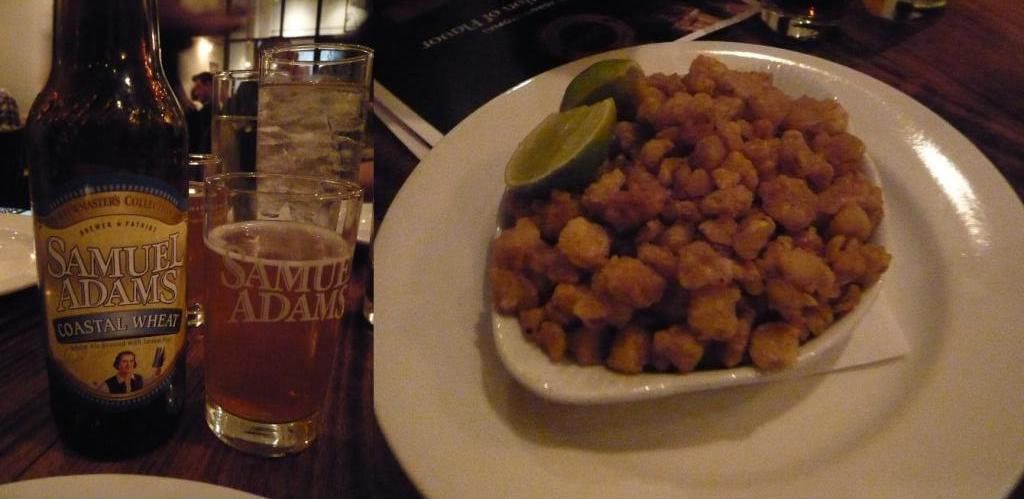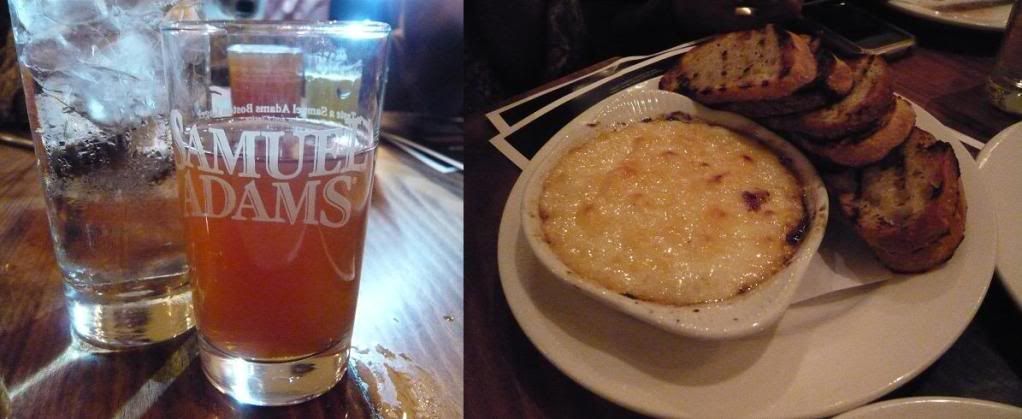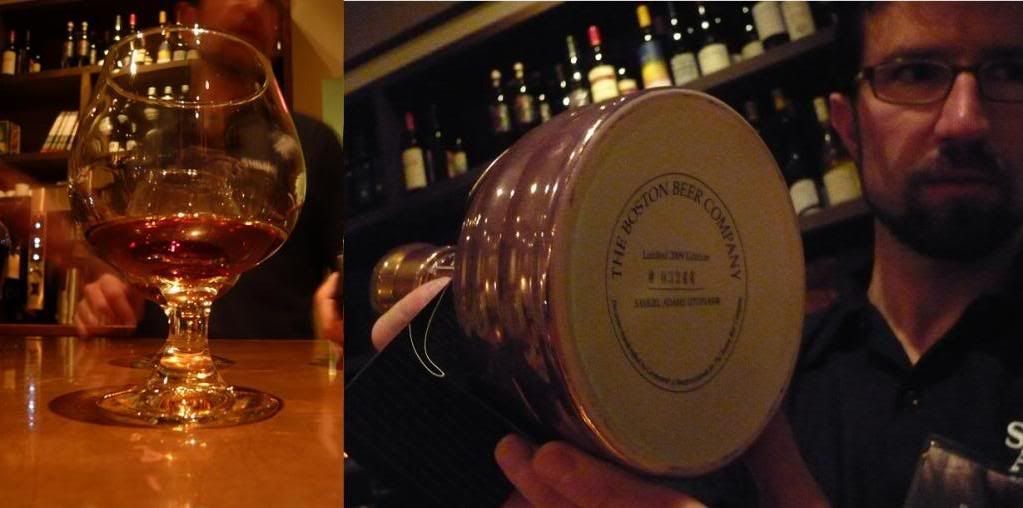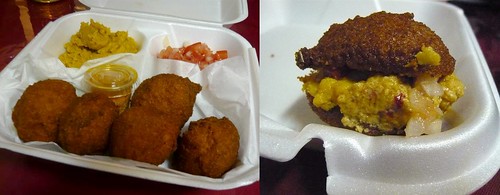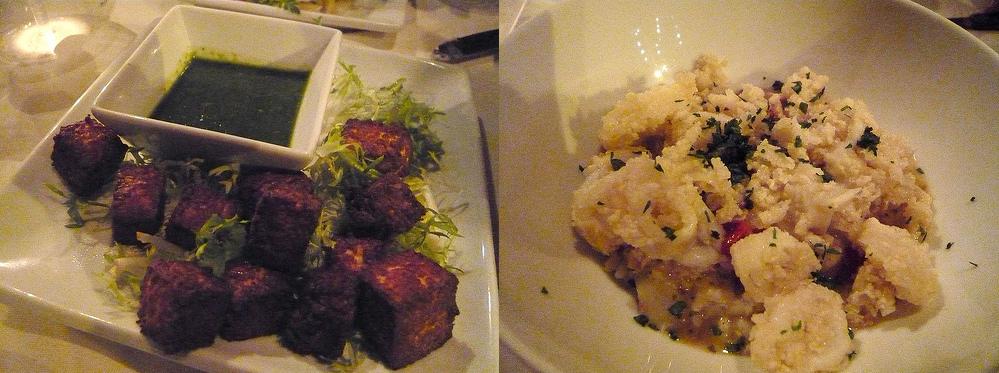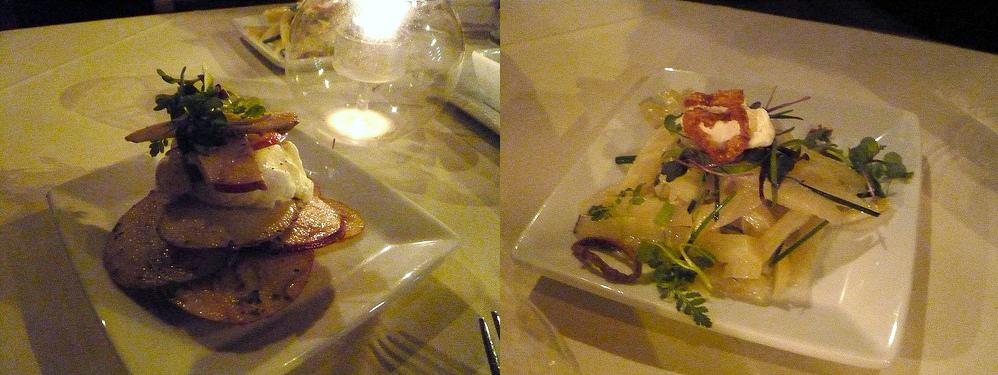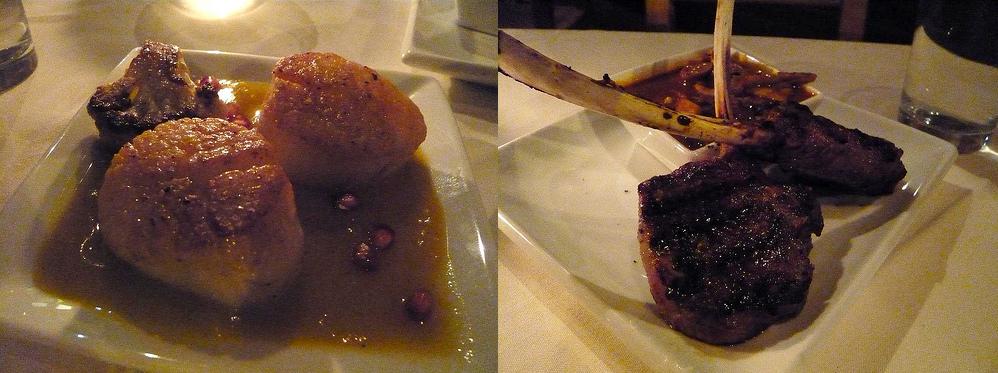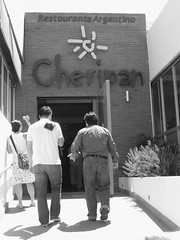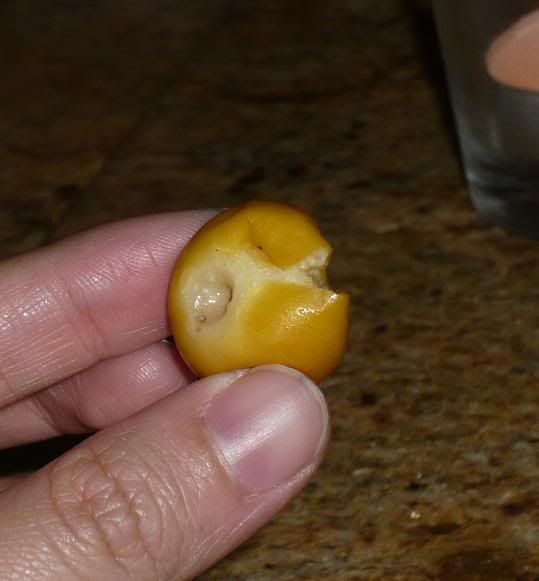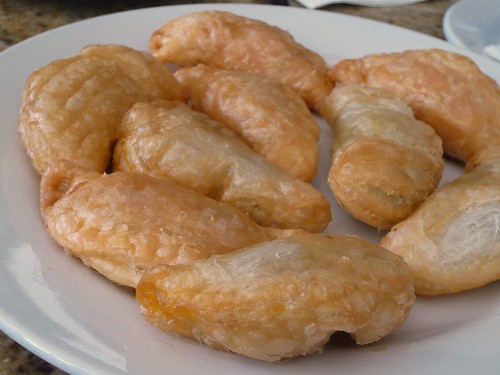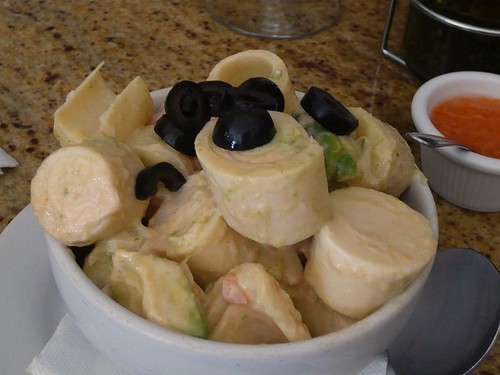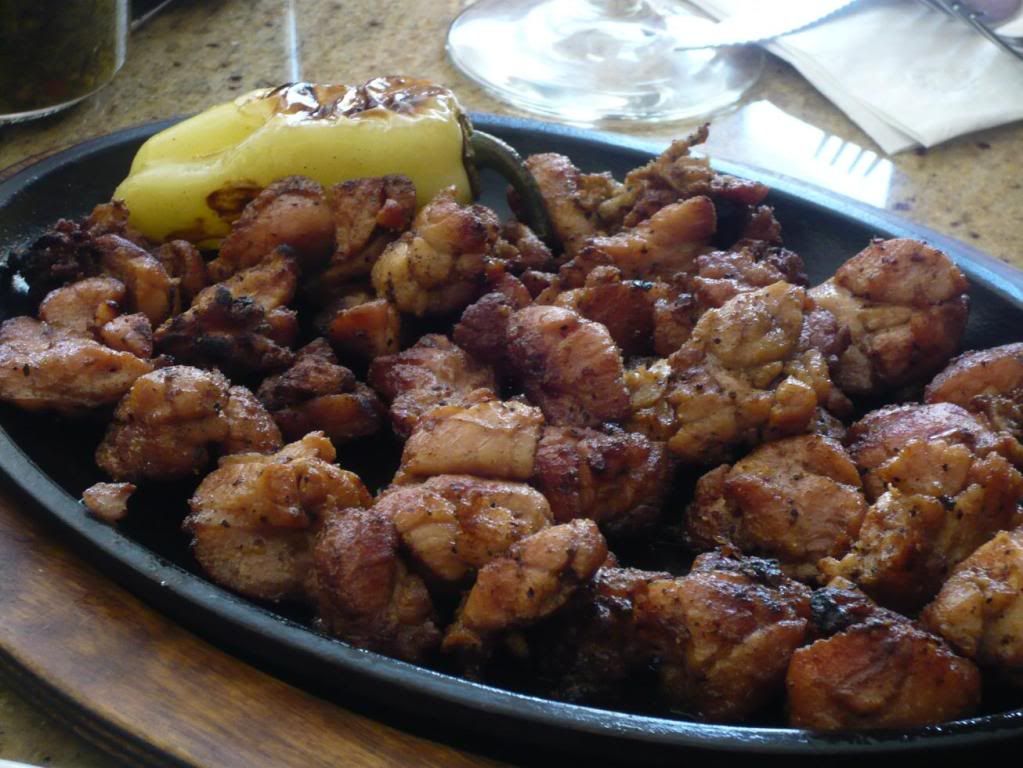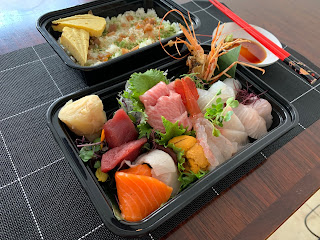Rio Brazil Cafe is perhaps a hole-in-the-wall many people, including myself, would miss if it weren't for the internet and blogger friends. Located in a strip mall in Palms, the overhead signage simply said "Brazilian Food".
Street Gourmet LA set up a tasting dinner for me, Gastronomy, and Food She Thought to get the word out about this little 15 month-old gem run by a native Carioca, Luciene Peck.

If you can't go without alcohol during your meal, you'll be happy to know that Rio Brazil Cafe has a BYOB policy with no corkage. As an extra treat for that night, Street Gourmet LA brought us two bottles of artisanal cachaça: Isaura from the Minas Gerais state that he had brought back from Brazil (not available in the US), and Weber Haus from Rio Grande do Sul, available at BevMo.
 If you bring your own ingredients and mixers, Luciene will also let you make your own cocktails. If you have never had a batida, though, I highly recommend you have her make you either the batida de coco (coconut) or the batida de maracuja (passionfruit). Or both.
If you bring your own ingredients and mixers, Luciene will also let you make your own cocktails. If you have never had a batida, though, I highly recommend you have her make you either the batida de coco (coconut) or the batida de maracuja (passionfruit). Or both.
The batidas are made with cachaça, condensed milk, and of course the fruits in question (either passionfruit or coconut cream+milk).
 Sweet and creamy, these batidas are quite dangerous for a Monday night.
Sweet and creamy, these batidas are quite dangerous for a Monday night.
As starters we got a couple of little savories. The coxinha de galinha translates to "little chicken legs" and is a drumstick shaped savory filled with shredded chicken. While here they serve a smaller "party-size" portion, in Brazil they're typically closer to the size of a real chicken leg. The
risolis/risoles is the crescent-shaped savory you see below, filled with cheese, meat, chicken or shrimp.
 An interesting note is that in Indonesia we also have a savory called risoles, though they're typically rectangular and filled with creamy chicken and vegetables. It's no mere coincidence since Indonesia was a Portuguese colony for a bit.
An interesting note is that in Indonesia we also have a savory called risoles, though they're typically rectangular and filled with creamy chicken and vegetables. It's no mere coincidence since Indonesia was a Portuguese colony for a bit.
They were served with Luciene's own pimenta which held a lot of flavor.
Most things in Brazil are served family style with rice, so we did the same thing here. A set of entrees came with a plate of arroz (white rice), including:
1) abobora com carne seca (butternut squash with home made beef jerky)
2) Bobo de camarao (shrimp in a yucca cream), succulent shrimp in manioc meal, coconut milk, dendê oil(palm oil),
3) feijao-black beans cooked with pork meat, bay leaf, onions and garlic.
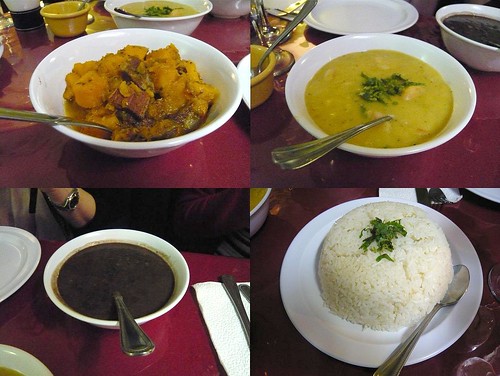 Everything was quite delicious, the fresh shrimp in yucca cream had an interesting thick texture you don't normally find in other cuisine. The abobora com carne seca is typically made with Brazilian pumpkin but since that's not available in the states, butternut squash was used instead. The beef jerky was meaty and smokey. Even the beans were very flavorful.
Everything was quite delicious, the fresh shrimp in yucca cream had an interesting thick texture you don't normally find in other cuisine. The abobora com carne seca is typically made with Brazilian pumpkin but since that's not available in the states, butternut squash was used instead. The beef jerky was meaty and smokey. Even the beans were very flavorful.
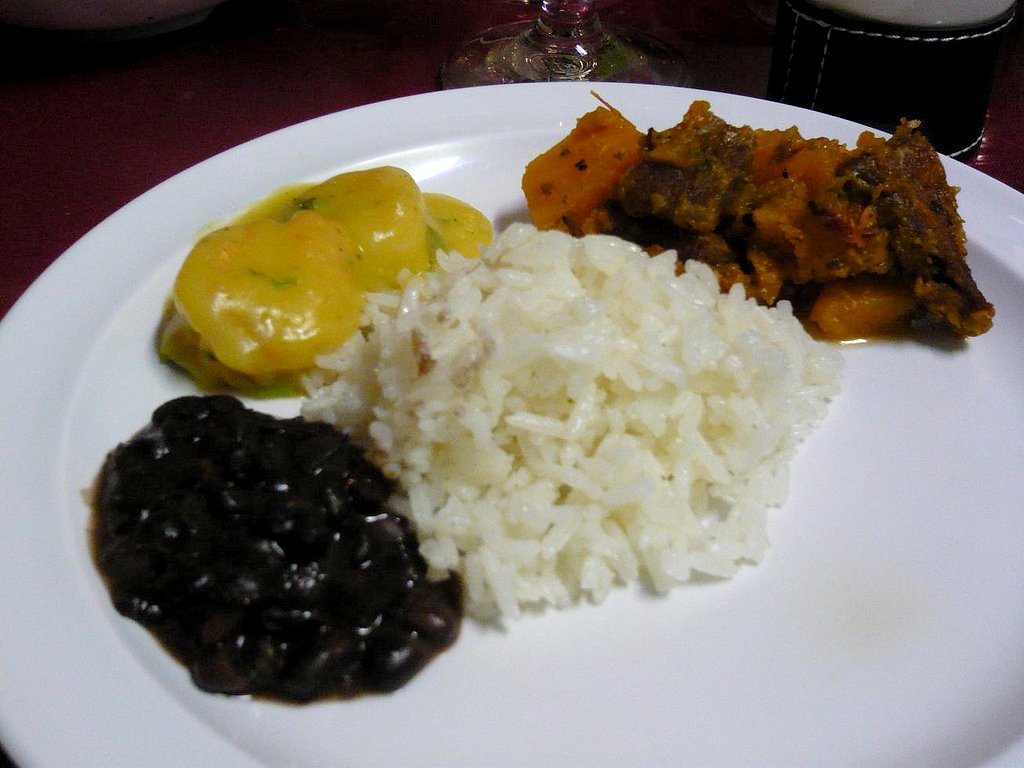
Moqueca de peixe (fish stew): cod with peppers and tomatoes, dendê oil, and coconut milk. This dish originates from the state of Bahia, but the Rio version is lighter since it's made with less dendê oil.
 A wonderful dish, again with very bold flavors and is perfect eaten with the fragrant rice.
A wonderful dish, again with very bold flavors and is perfect eaten with the fragrant rice.
The climax of the meal was one I had been waiting for all along:
Feijoada completa(complete feijoada), the national dish of Brazil traditionally served on Wednesdays and Saturdays.
The feijoada is a black bean stew made with pe' de porco( pork trotters), rabo(tail),costela( ribs), carne de porco (pork meat), carne seca (beef jerky). Cooked for a long time with onions and garlic, we could smell this from the kitchen, whetting our appetite while waiting for the dish to come out.
The completa meal included couve (collard greens).
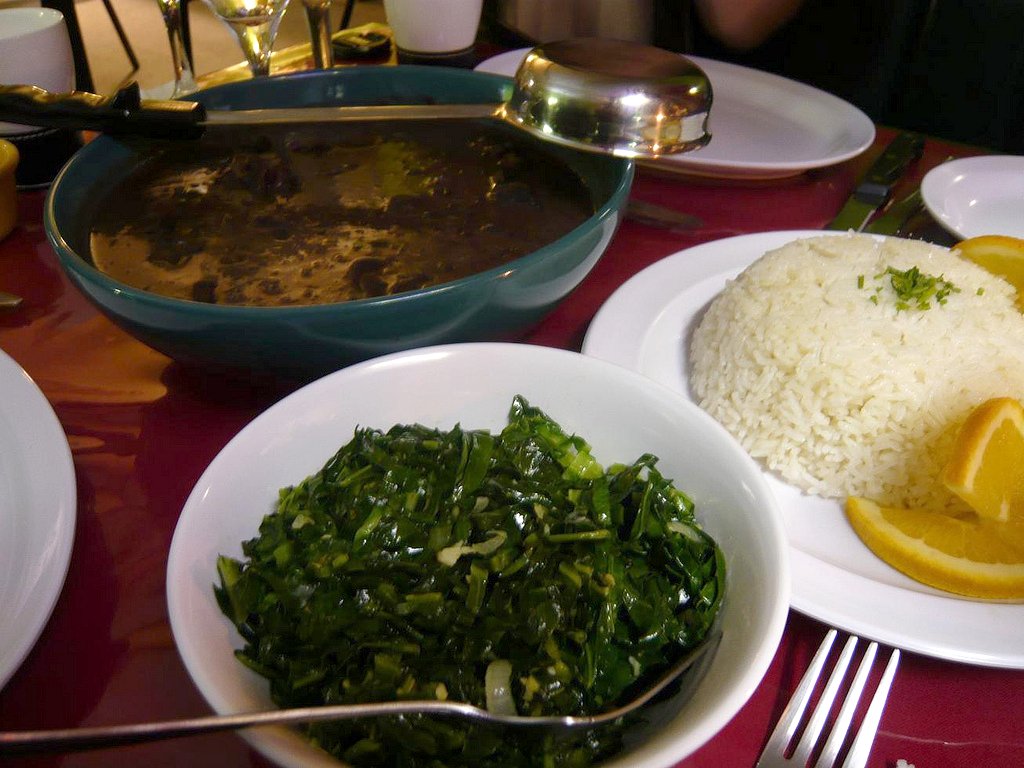 As with all other dishes, the feijoada is meant to be eaten with white rice. Sprinkle some farofa (manioc meal) on top to complete it.
As with all other dishes, the feijoada is meant to be eaten with white rice. Sprinkle some farofa (manioc meal) on top to complete it.
 A rich and flavorful stew is comfort food at its best. An immensely satisfying stew dominated by the flavors of the beans and pork. With so many different cuts of meat in this dish, there's something for everyone.
A rich and flavorful stew is comfort food at its best. An immensely satisfying stew dominated by the flavors of the beans and pork. With so many different cuts of meat in this dish, there's something for everyone.
For dessert we shared three different types of sweets:
Coconut Cream with boysenberries, mousse de manga (mango mousse), pudim de leite (Brazilian style flan).
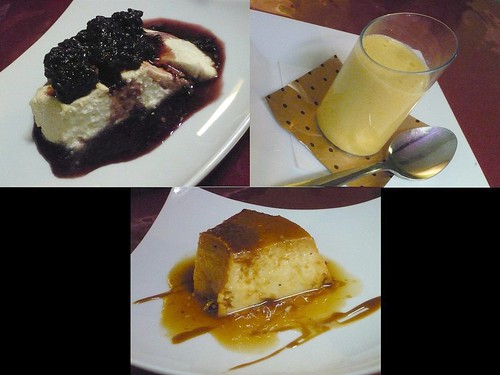 From the light and tart mango mousse to the rich and heavy Brazilian flan, we got our sweet tooth satisfied. My favorite is probably the coconut cream which wasn't too thick and had a distinct coconut flavor, and even chunks of the fruit itself. I could've gone for it all on my own.
From the light and tart mango mousse to the rich and heavy Brazilian flan, we got our sweet tooth satisfied. My favorite is probably the coconut cream which wasn't too thick and had a distinct coconut flavor, and even chunks of the fruit itself. I could've gone for it all on my own.
Rio Brazil Cafe is a wonderful little place serving up some delicious and authentic Brazilian Carioca food. With a live music performance on Saturday nights and a BYOB policy (they're also going to start a Cachaça club where you can keep a bottle there), there's no reason this place should stay hidden. Do give it a try.
Oh and by the way, they are also on restaurant.com so you can get a gift certificate to make your meal even cheaper from this link:
Rio Brazil Cafe
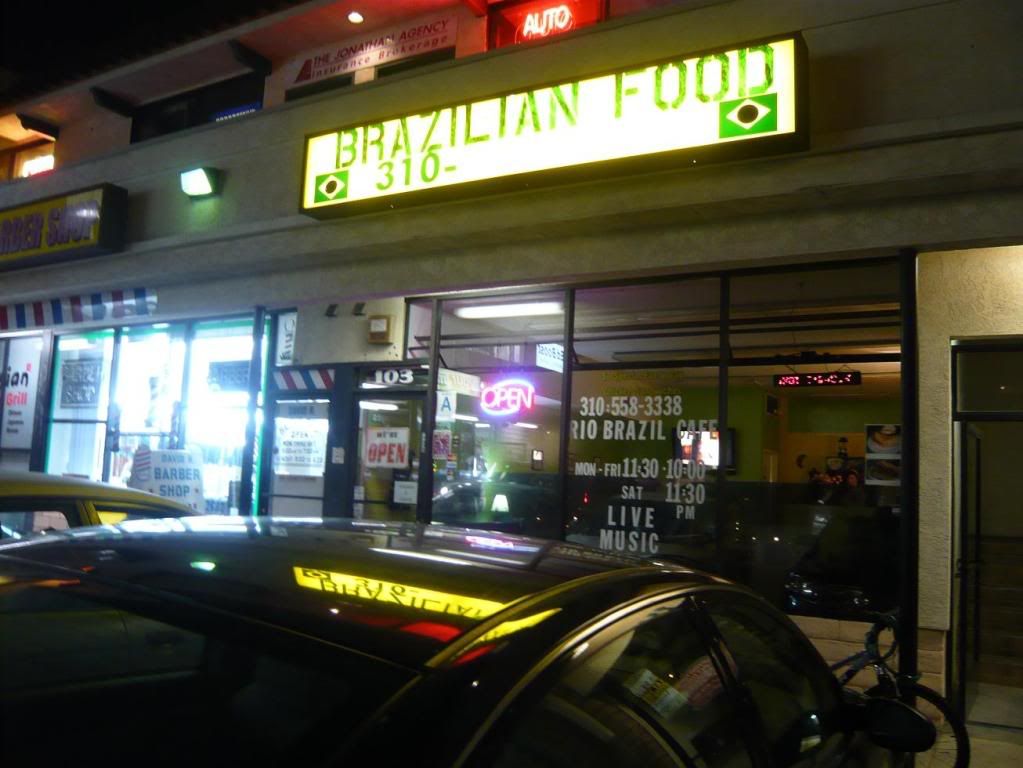 Rio Brazil Cafe
Rio Brazil Cafe
3300 Overland Ave
Los Angeles, CA 90034
(310) 558-3338


 Here at El Fenix, you dress your own tacos the way you like it. The expected toppings like cabbage, onions, cilantro, salsa, guacamole, etc etc are all there.
Here at El Fenix, you dress your own tacos the way you like it. The expected toppings like cabbage, onions, cilantro, salsa, guacamole, etc etc are all there.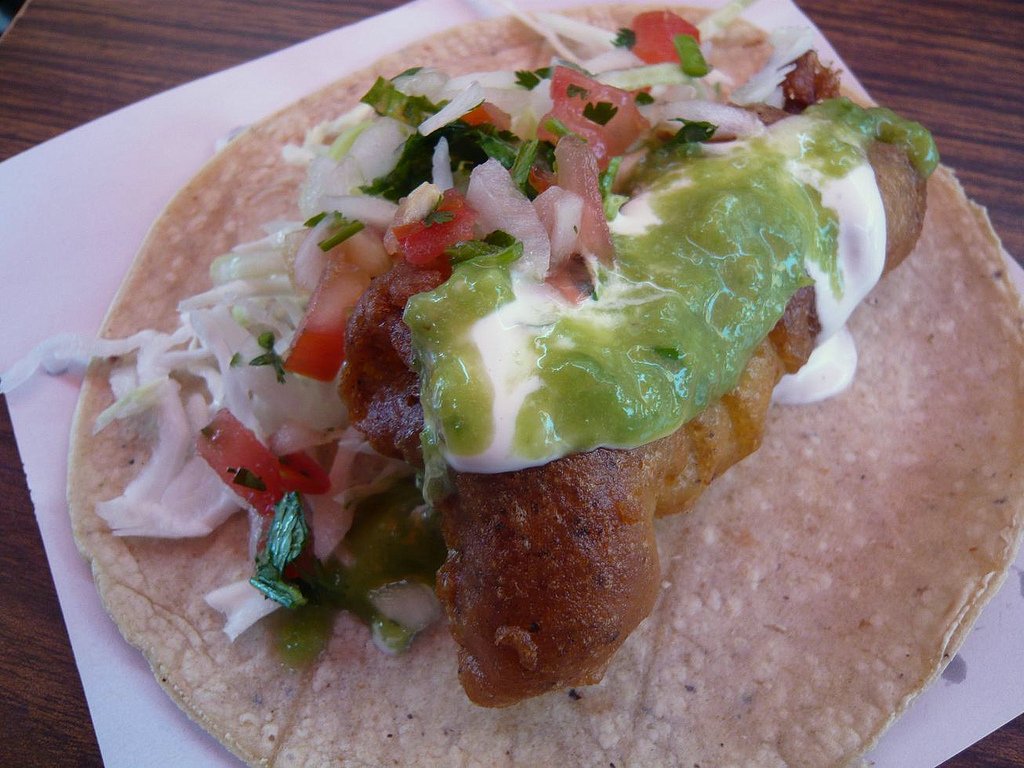 The crunchy fried batter makes way for the juicy and meaty piece of shark. It really is about the batter and the double frying here. The mustard laden batter gives it that much more flavour and the double frying makes it so crispy yet very much not greasy, despite the frying in lard.
The crunchy fried batter makes way for the juicy and meaty piece of shark. It really is about the batter and the double frying here. The mustard laden batter gives it that much more flavour and the double frying makes it so crispy yet very much not greasy, despite the frying in lard.

